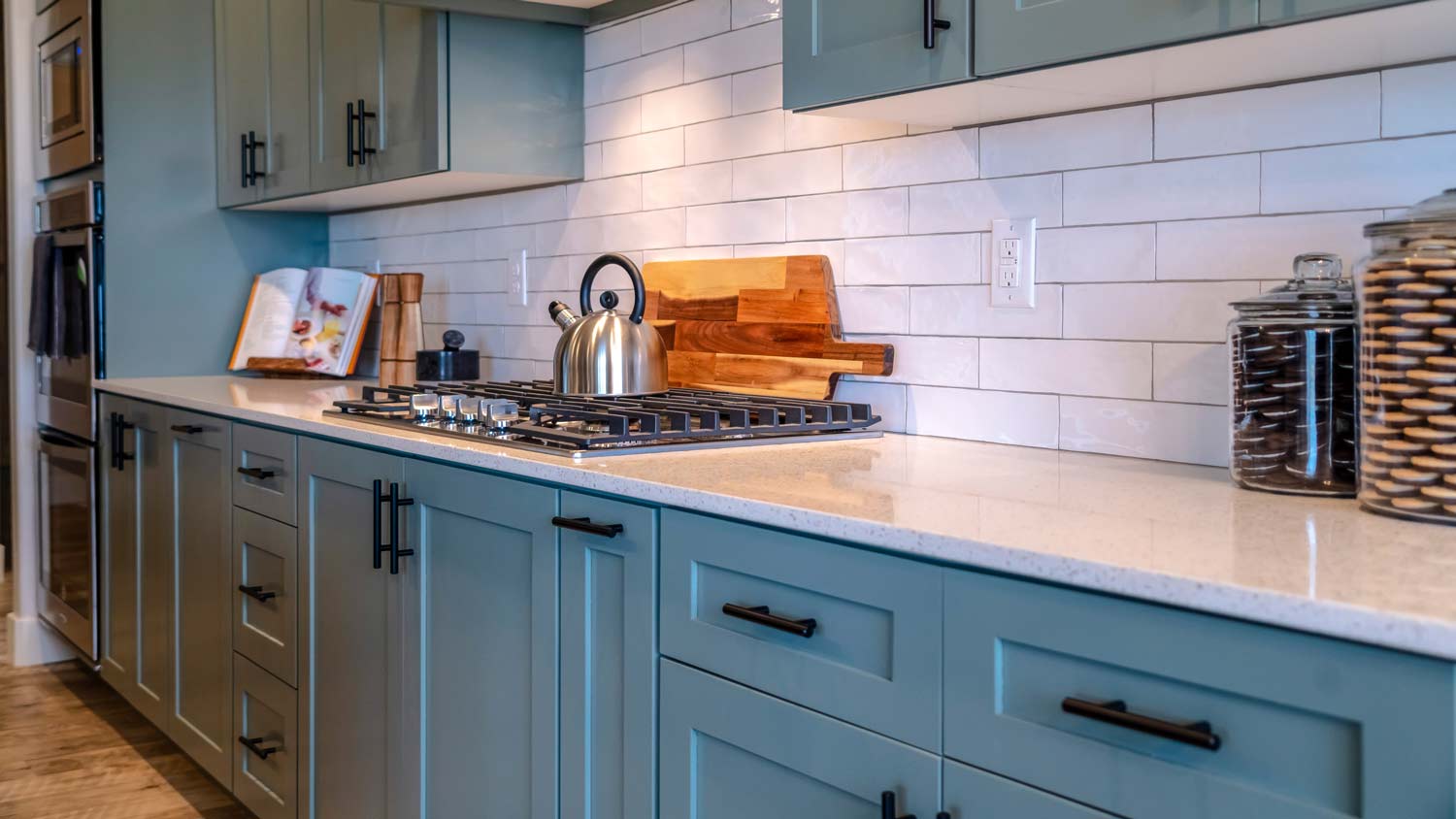
Discover the cost to stain cabinets, including average prices, key cost factors, and tips to help you budget and save on your cabinet staining project.
Avoid coming unhinged by the noisy nuisance of slamming cabinet doors


It’s not just about preventing the ear-shattering racket of a cabinet door slamming—learning how to install soft-close hinges is a wallet-friendly project that even new DIYers can tackle over a weekend. The smooth, slow piston-closing mechanism helps protect your quality cabinets and prolong their lifespan. Follow five steps to upgrade your cabinet hinges and enjoy the peace of a quieter kitchen.
The trickiest part of installing soft-close hinges for kitchen cabinets is selecting the right style for your setup. Getting it wrong means you won’t be able to use the hinges. If you try, you could damage the cabinets, or the doors won’t line up and close properly. The following are the different types of cabinets you will run into while choosing hinges.
Most cabinets in the U.S. are face frame cabinets with a border or frame covering the edge of the cabinet box, and the door hinges attach to the frame. On the other hand, for frameless cabinets, the hinges attach to the cabinet boxes.
Standard hinges, also known as a partial overlay, are the most common type of cabinet hinges in the U.S. They leave room between the cabinet doors, so the face frame is slightly visible when the doors close. The different sizes influence how much of the face frame is visible.
Full overlay hinges cover the entire face frame when the doors are closed. Inset (or flush) hinges are set inside the cabinet frame or on the walls, sitting flush with the cabinet face when closed.
If possible, rope in a family member or friend to help with this task—you don’t want to damage the heavy doors. Use a power drill or screwdriver (if you don’t mind a slower process) to remove the existing hinges from the cabinet frame or wall.
To keep track of which door goes where complete the task one door at a time.
Place the door on a flat, smooth surface and carefully unscrew the hinges and any old screw mounting points from the cabinet door with the power drill or screwdriver. Keep the existing screws (if they aren’t stripped and worn) to use later if new ones don’t come with the soft-close hinges.
If you select soft-close hinges that match the size of the old ones, you will just need to line up the new hinges and screw them into the existing mortises. If they don’t align exactly, you’ll need to drill in new holes using a self-centering drill bit.
When drilling new holes, use a combination square to help line the hinge up accurately with the bottom of the door. Mark the drill hole with a pencil for accuracy.
If you have to drill new holes and want a neat finish, fill the old holes with wood filler.
If you need assistance holding the hinges in place as you attach the screws into the holes and don’t have a helper, pop a little painter’s tape on their top edges. Don’t fully tighten the screws until the doors are aligned correctly. That way, repositioning them is easier, and you’re less likely to strip the screws.

Ensure there’s a consistent gap between the doors, and adjust the cabinet door hinges if there are any inconsistencies.
Most soft-close hinges have three adjustment points to allow a bit of fine-tuning. You can move the hinge a few millimeters to fix small misalignments. For anything bigger, you’ll need to take the door off again for more accurate realignment.
Once you're happy with how the doors are sitting, tighten up the screws properly.
Providing you have a little patience and attention to detail, installing soft-close hinges is something even a DIY amateur can tackle. All you need are a few basic tools, a couple of hours, and the right hinges, so you don’t damage the doors. With your new confidence, you might even want to DIY and save on the cost of installing soft-closed drawers.
But, if you’re not an enthusiastic weekend warrior or have worries about hanging the doors at the wrong angles, there’s no shame in calling in a local cabinet contractor or a handyperson near you. They can source the right hinges and do a tidy and timely job. Expect to pay $100 to $300 on top of the cost of the hinges to have a pro complete the project.
From average costs to expert advice, get all the answers you need to get your job done.

Discover the cost to stain cabinets, including average prices, key cost factors, and tips to help you budget and save on your cabinet staining project.

Discover the cost of resurfacing kitchen cabinets, including average prices, key cost factors, and tips to help you budget and save on your next kitchen update.

If you are wondering how to sand cabinets for painting, there are several ways to do it. We share the most effective sanding methods.

What’s the cost of refacing kitchen cabinets vs. replacing them entirely? We break down the many factors to consider when deciding between the two.

Discover the cost of glazing cabinets, including average prices, key cost factors, and tips to save on your cabinet glazing project.

We share the pros and cons of refacing kitchen cabinets so you can make the most of your remodeling budget. We also reveal a few alternatives to refacing.